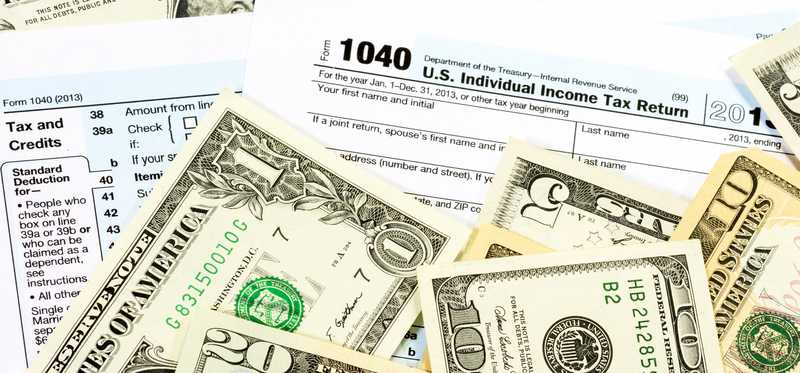8 Ways to Avoid a Long Financial Winter

8 Ways to Avoid a Long Financial Winter
Is spring right around the corner?
Whether the groundhog predicts an early spring or six more weeks of winter, now is a smart time to make sure your financial future is warm and bright. As the winter of 2018 heads down the home stretch, here are eight steps you can take to make sure your finances aren’t stuck in a long winter.
Previous
Next

1. File your tax return ASAP
The IRS started accepting tax returns on Jan. 29, and as long as you have all of your necessary tax documents, it’s generally a smart idea to file your return as soon as possible.
In addition to the obvious reason of getting your tax refund quicker if you’re entitled to one, filing early is the best way to guard against tax-related identity theft. Although the IRS has gotten significantly better at cracking down on fraudulent returns, it’s still a major issue. Fortunately, the IRS only accepts one tax return per Social Security number -- so if you’ve already filed, it’s next to impossible for a criminal to file a phony return in your name.
Previous
Next

2. Make a plan to tackle credit card debt
The average consumer who used credit cards to pay for holiday purchases added an average of $1,054 to their credit card debt, according to a survey by MagnifyMoney. Based on the average credit card interest rate, making just a $25 monthly payment would take until 2023 to pay off the balance and would result in about $500 in interest along the way.
If you got yourself into credit card debt over the holidays, make a plan to pay it off as quickly as possible. Even a seemingly small increase in payment can make a difference -- if the average consumer paid $50 instead of $25 per month, they would pay off the debt in just over two years, and would save more than $250 in interest.
Previous
Next

3. Expect the unexpected
61% of Americans couldn’t cover a $1,000 emergency expense without borrowing the money or selling something, a recent Bankrate.com report found.
Also, while the term “emergency expense” implies something that rarely happens, unexpected expenses happen more often than you think. 63% of Americans experienced a “financial setback” in 2017, according to the National Endowment for Financial Education. This is especially true during the winter -- for example, a broken heater isn’t necessarily an emergency expense if it happens when it’s 60 degrees outside. When it’s say, 20 degrees, it’s a bit more urgent.
Experts often suggest that the ideal emergency fund consists of six months’ worth of your expenses in a readily accessible place. This can be a lot of money. However, you don’t need to get there right away, and something is certainly better than nothing. Try setting an attainable goal for 2018, like $1,000. If you get paid biweekly, this is just $38.50 out of each paycheck, and it will put you in better shape than most Americans.
Previous
Next

4. Get the most out of your savings
In the previous section, we said that your emergency fund should be in a readily-accessible place, which typically means a savings account. However, not all savings accounts are the same.
Specifically, consider an online savings account to get the most out of your emergency savings. The average branch-based savings account pays a paltry 0.16% APY, while there are excellent online savings options with APY of up to 1.50% as of this writing.
This is especially important if you have a substantial amount of cash in the bank, for emergencies, college tuition, etc. Let’s say, for example, that you’ve built up a $10,000 emergency fund. By choosing an online-only bank account, you’ll collect an additional $134 per year in interest, based on the averages. This may not sound like much, but it adds up to more than $1,300 over a decade -- that could pay for one of your unexpected expenses all by itself.
Previous
Next

5. Pay your medical expenses the right way
If you have a high-deductible health insurance plan and are not saving money in a health savings account, or HSA, yet, now is the time to start.
Simply put, an HSA is quite possibly the best tax-advantaged investment account in the U.S. Money is contributed to an HSA on a pre-tax basis, just like a traditional IRA or 401(k), and is then invested in a selection of mutual funds or other investments offered by the plan. And, any withdrawals used to pay for qualified healthcare expenses are 100% tax-free, no matter how much your investments have earned.
In addition, HSAs double as excellent retirement savings options. After you turn 65, you can withdraw from your HSA for any reason. For 2018, qualified individuals can contribute as much as $3,450 to an HSA if they have single health coverage, or $6,900 for family coverage.
ALSO READ: 4 Smart Ways to Prepare for Unplanned Medical Expenses
Previous
Next

6. Understand how the new tax law could affect you
If you’re snowed in and stuck inside this winter (or even if you’re not), it’s a smart idea to take some time and familiarize yourself with the new tax changes that are mostly going into effect in 2018, and how they could affect you.
Here’s one specific example of how this could affect you. Let’s say that you donate to your favorite college’s athletic department each year in exchange for the right to purchase season tickets. Previously, these donations were 80% deductible, but this will no longer be the case. Now, I’m not saying that this should prevent you from supporting your alma mater’s athletic department, but a change like this could certainly make you think twice about how much you’re giving.
Previous
Next

7. Turn down the heat
Do you keep your home at the same temperature around the clock? If so, you may want to consider turning the thermostat down while you’re asleep, or when you’re not home.
You might be surprised at how much of a difference this could make. Turning your heat down by 7-10 degrees for eight hours per day could reduce your heating costs by as much as 10%, according to the U.S. Department of Energy. The same applies during the summer, by turning your thermostat up by 7-10 degrees when you’re not home.
ALSO READ: Is Energy Storage the Key to Unlocking the "Smart" in Smart Homes?
Previous
Next

8. Ask for a raise
The new tax law means that many businesses can expect their profits to increase significantly over the coming years. You’ve surely noticed that many high-profile companies have announced worker bonuses of $1,000 or more, or have implemented higher company-wide wages.
For this reason, now could be a great time to ask for a raise, especially if you haven’t gotten one in a while or you feel you’re underpaid. (You can get an idea of about how much you should be making at websites like PayScale.com)
Only about 40% of Americans have asked for a raise within the past two years, with the millennial generation of workers the most likely to ask (46% have). And those who do are largely successful -- four out of five millennials who asked for a raise got one, according to the Better Money Habits Millennial Report from Bank of America.
Matthew Frankel owns shares of Bank of America. The Motley Fool has no position in any of the stocks mentioned. The Motley Fool has a disclosure policy.
Previous
Next
Invest Smarter with The Motley Fool
Join Over Half a Million Premium Members Receiving…
- New Stock Picks Each Month
- Detailed Analysis of Companies
- Model Portfolios
- Live Streaming During Market Hours
- And Much More
READ MORE
HOW THE MOTLEY FOOL CAN HELP YOU
-
Premium Investing Guidance
Market beating stocks from our award-winning service
-
The Daily Upside Newsletter
Investment news and high-quality insights delivered straight to your inbox
-
Get Started Investing
You can do it. Successful investing in just a few steps
-
Win at Retirement
Secrets and strategies for the post-work life you want.
-
Find a Broker
Find the right brokerage account for you.
-
Listen to our Podcasts
Hear our experts take on stocks, the market, and how to invest.
Premium Investing Services
Invest better with The Motley Fool. Get stock recommendations, portfolio guidance, and more from The Motley Fool's premium services.